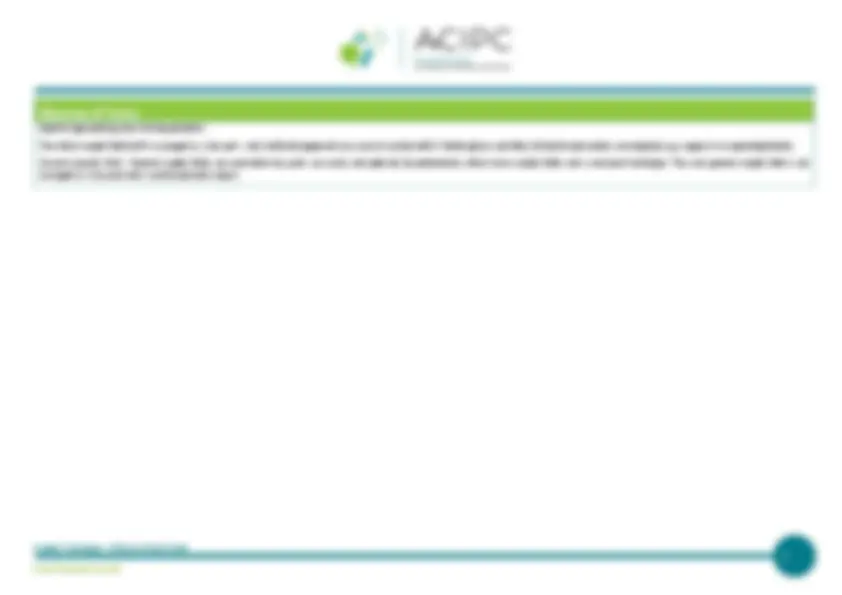



Study with the several resources on Docsity

Earn points by helping other students or get them with a premium plan


Prepare for your exams
Study with the several resources on Docsity

Earn points to download
Earn points by helping other students or get them with a premium plan
Community
Ask the community for help and clear up your study doubts
Discover the best universities in your country according to Docsity users
Free resources
Download our free guides on studying techniques, anxiety management strategies, and thesis advice from Docsity tutors
A comprehensive cheat sheet for clinicians on aseptic technique, including risk assessment, environmental controls, infection control components, and procedure preparation. It covers standard and surgical aseptic fields, hand hygiene, ppe usage, patient preparation, and waste management.
What you will learn
Typology: Study notes
1 / 3

This page cannot be seen from the preview
Don't miss anything!


Aseptic Technique - Clinician Cheat Sheet 1
If the procedure is technically simple AND Short in duration (less than 20 minutes) AND Involves few and small key sites and key parts AND Key parts or sites will not be touched STANDARD AT applies If the procedure is technically complex OR Long in duration (longer than 20 minutes) OR Involves large open key sites or large or numerous key parts OR Key parts or key sites need to be touched OR The Clinician performing the procedure is inexperienced SURGICAL AT applies APPLY ENVIRONMENTAL CONTROLS Ensure that there are no avoidable nearby environmental risk factors Examples include: waste management, cleaning of the nearby environment, bed making, patient using commode, patient bed curtains across work area CONSIDER INFECTION CONTROL COMPONENTS STANDARD AT SURGICAL AT Hand Hygiene – Clinical wash or ABHR, Non sterile or sterile gloves Other Personal Protective Equipment General Aseptic Field Hand Hygiene – Surgical hand scrub, Sterile Gloves Other Personal Protective Equipment Critical Aseptic Field, maximum barrier precautions PREPARE FOR PROCEDURE STANDARD AT SURGICAL AT
Aseptic Technique - Clinician Cheat Sheet 2
On completion of the procedure the clinician should remove their gloves (if used) and perform hand hygiene Dispose of all waste. Clean equipment as per local policy. Again perform hand hygiene
Key Parts - Key parts are the sterile components of equipment used during a procedure. Examples: bungs, needle hubs, syringe tips, dressing packs etc. Key Sites - Key sites include any non-intact skin and insertion or access sites for medical devices connected to the patient. Examples: insertion/access sites of intravenous devices, urinary devices, open wounds etc. Non-touch technique - Performance of procedure without touching key parts and/or sites. If it is necessary to touch key sites/parts then sterile gloves must be used to minimise contamination. Critical aseptic field - Critical aseptic fields are used when key parts/sites cannot be protected with covers and caps or handled at all times by a non-touch technique, or when open and invasive procedures